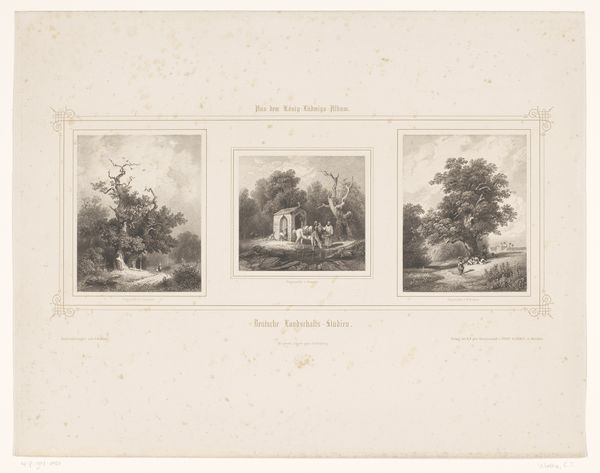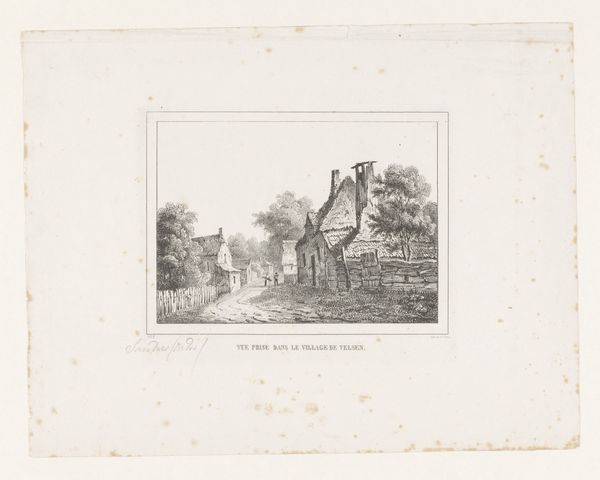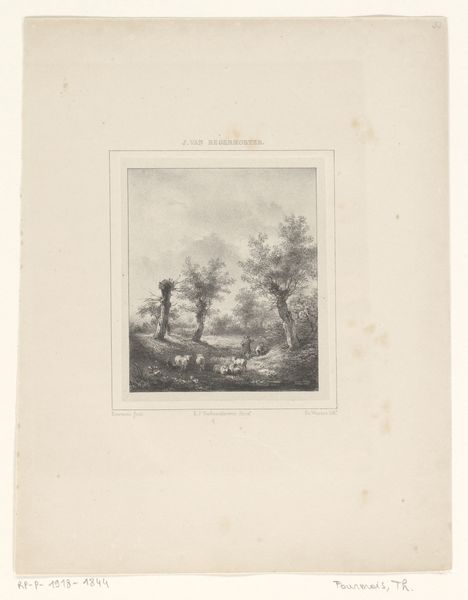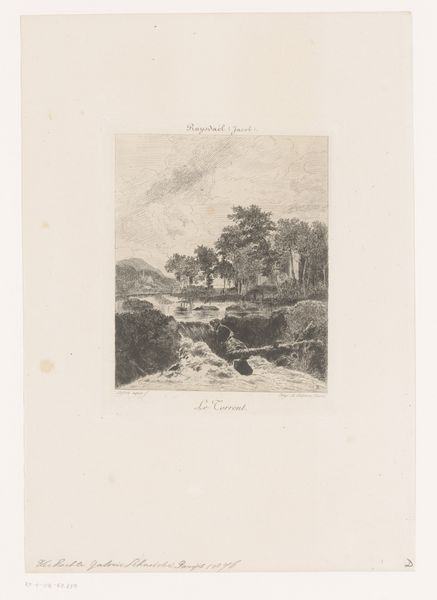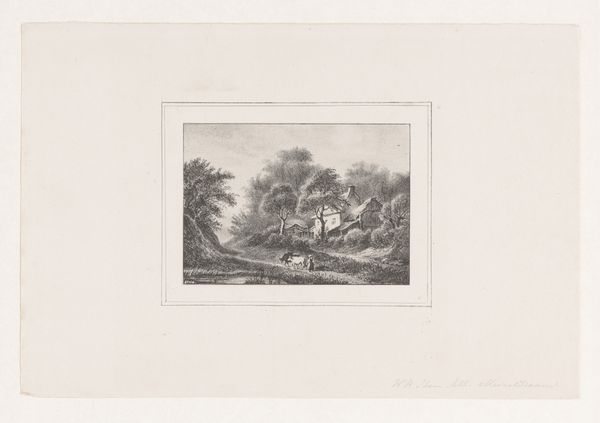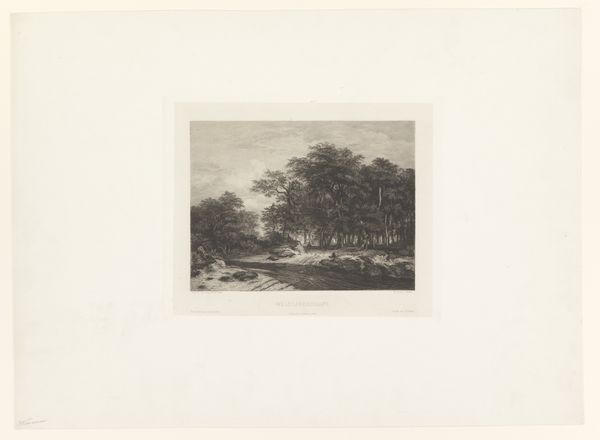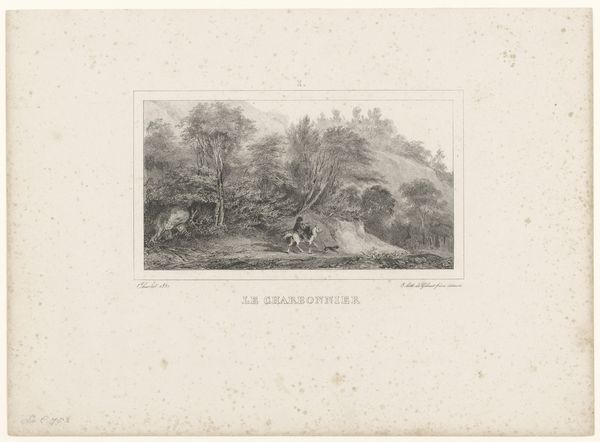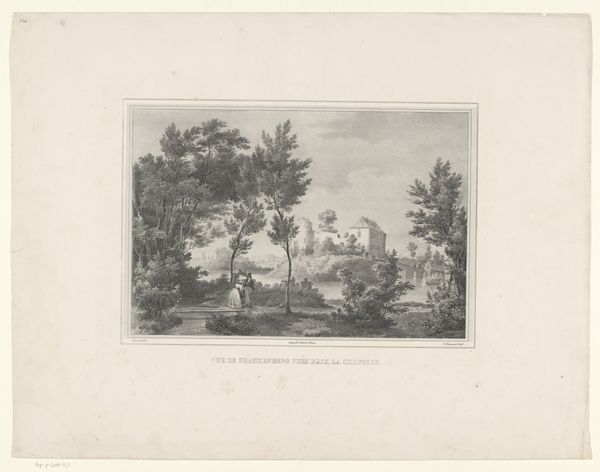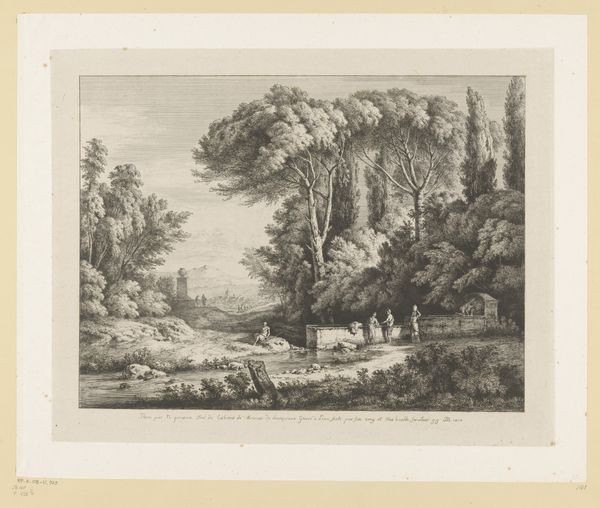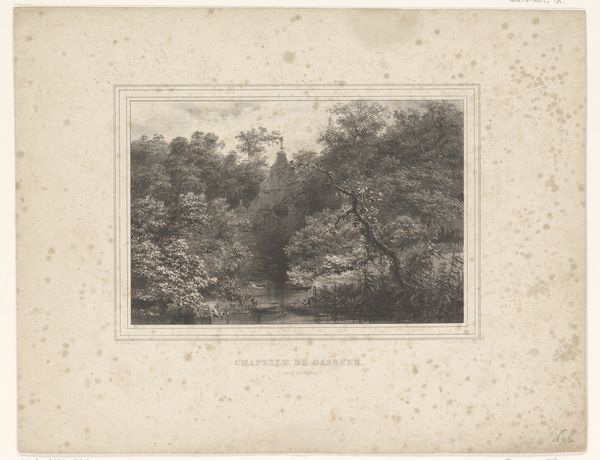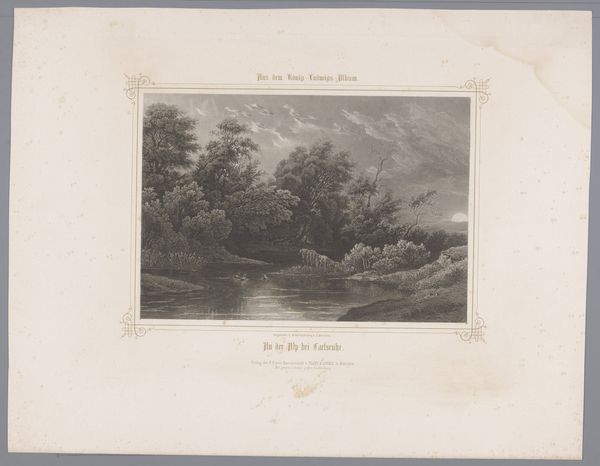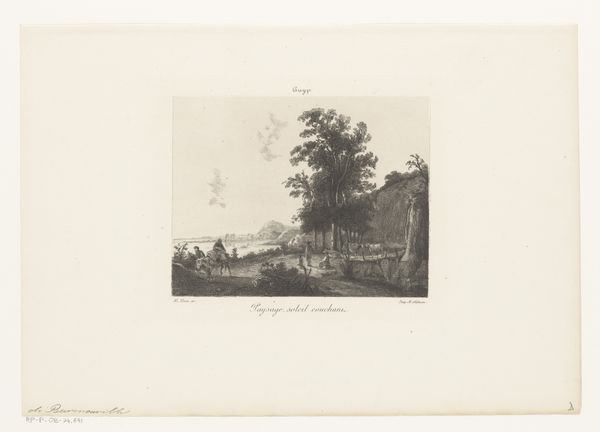
Dimensions: height 600 mm, width 440 mm
Copyright: Rijks Museum: Open Domain
Curator: This print from the 1850s by Carl Friedrich Würthle presents two distinct landscapes, titled "Gezicht op Allgäu en een gezicht op de ruïne van Salzburg." Both views are captured in engraving on toned paper. Editor: They're rather melancholic, aren't they? I see a subdued world of greens and grays, a certain fading beauty. The paper itself looks aged, which somehow heightens that wistful feeling. Curator: Indeed. Würthle's romantic style, tempered with a touch of realism, renders the German countryside with a somber quality. Consider how the placement of these images reflects cultural values: the romantic Allgäu versus a specific ruin. Each presents very different ideas, one emphasizing an idealized space and another looking at something crumbling away. Editor: Absolutely, that positioning really makes you wonder. I am drawn particularly to the composition of the lower image; that dark, arching treeline feels almost theatrical. And what about those little figures? They add a spark of narrative, I can imagine myself right there with them on some literary pilgrimage. Curator: Right, that is likely intentional. Genre painting like this catered to bourgeois audiences, emphasizing connection through shared emotional and cultural memory, reflecting the societal preoccupation with nature, history, and their own identity during the Romantic era. These serene images reinforced national ideals while selling nicely in local print shops. Editor: They have such intimacy about them that feels quite the opposite of nationalist! All that romanticism probably helps you forget these prints are about control and cultural positioning. I'm actually thankful this old paper lends them that aura of vulnerability. Perhaps they resist their history slightly, reminding us not to idealize either landscape or the politics of pretty images. Curator: A lovely sentiment, a necessary counterbalance to Würthle's intent perhaps. Editor: Agreed, so I'll leave here thinking about art and its strange dialogue with the present and its own time, a good thing.
Comments
No comments
Be the first to comment and join the conversation on the ultimate creative platform.
